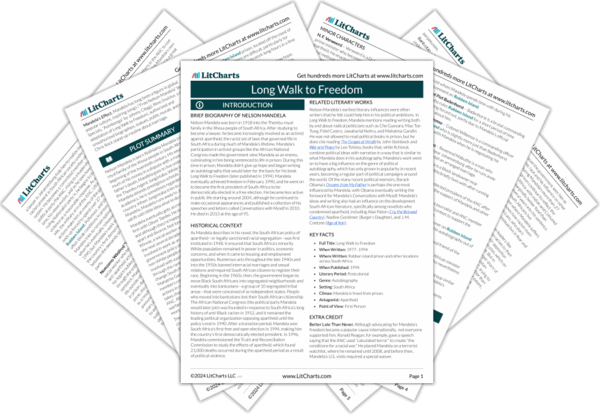This is not the same Winnie that Mandela later marries, but like many other elements of his childhood, this experience helps prepare Mandela for his future. This passage is an early example of how Mandela’s rural status makes it difficult for him sometimes to adapt to new traditions. But rather than sticking to his traditions, Mandela dedicates himself to learning the new ways so that he can fit in with both worlds.
